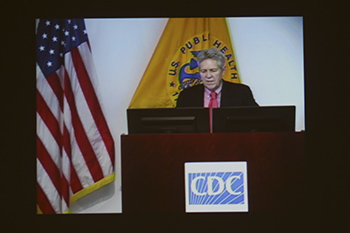New methods for chemical contamination analysis
6 octobre 2017
Dr Thomas H. Connor, PhD Division of Applied Research and TechnologyNational Institute for Occupational Safety and Health
Cincinnati, OH USA

Healthcare facilities are often contaminated with antineoplastic drugs where these drugs are prepared and administered to patients. Surface contamination can lead to inadvertent dermal update from contacting contaminated surfaces. Such contamination is typically measured by collecting wipe samples and subsequent analysis of the samples using GC-MS/MS or LC-MS/MS. This methodology is extremely sensitive and can determine contamination levels down to a few picograms. However, the required equipment is very expensive, requires properly trained personnel, and it may take days or weeks to obtain results from an analytical laboratory. NIOSH has been investigating methodology that can produce results in near real-time, providing almost immediate results. Two approaches under development include surface wipe sampling followed by lateral flow immunoassay (LFIA) and florescence covalent microbead immunosorbent assay (FCMIA). NIOSH has developed methods for 5-fluorouracil, paclitaxel, and doxorubicin and is working with a commercial developer to make the technology available to healthcare professionals. While this methodology can’t approach the same level of sensitivity as routine analytical methods, they are suitable for certain applications such as : to provide rapid results to screen for possible contamination, to validate routine cleaning methods, to evaluate worker technique, and to determine if a spill has been satisfactorily cleaned up. Pharmacists and other healthcare personnel can utilize these techniques with a minimal amount of training and equipment. Also these methods are intended to be less costly than laboratory methods and therefore can be used on a more frequent basis. Since these methods may not replace the more sensitive analytical methods, it may be necessary to follow up with routine chemical analysis in some cases.